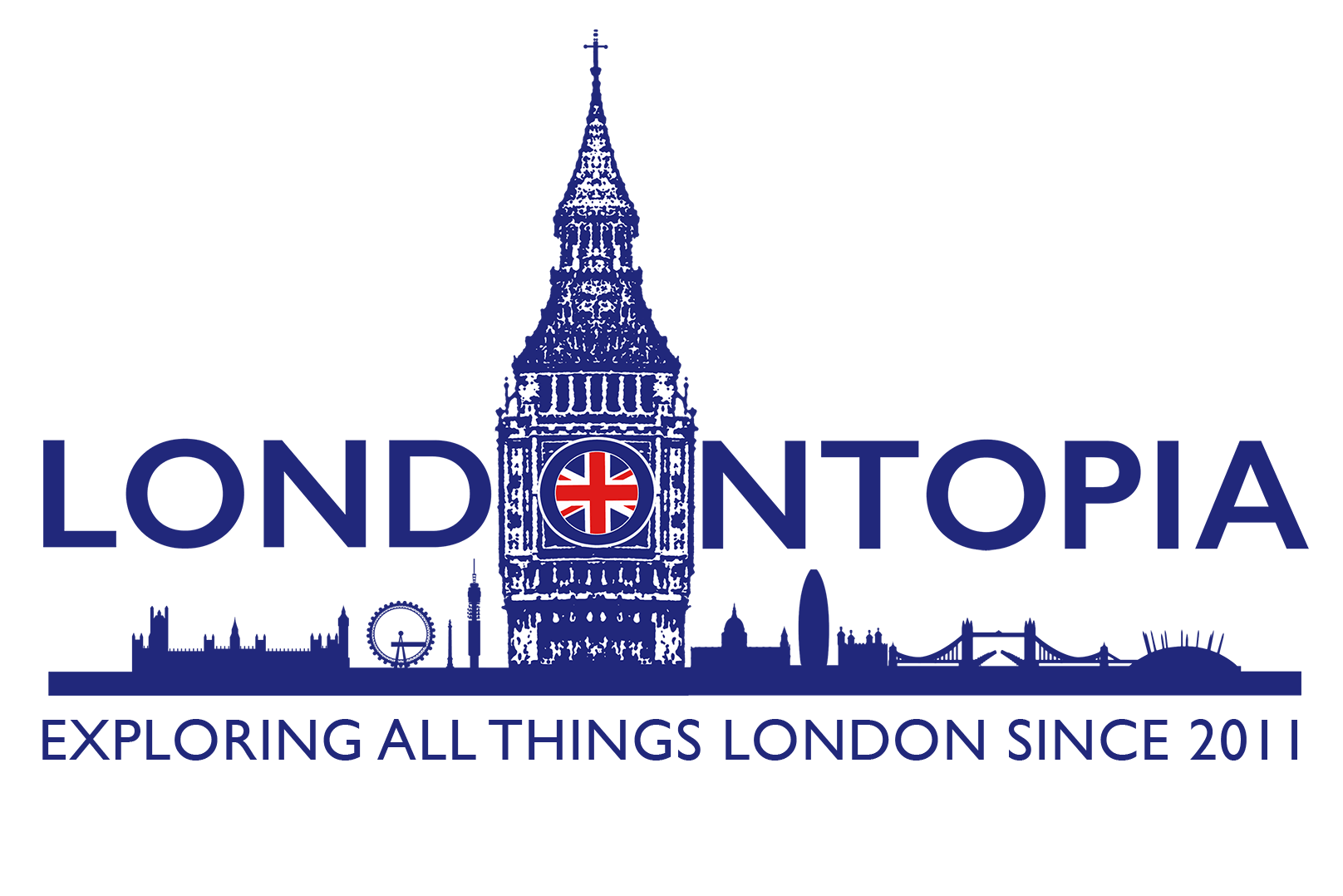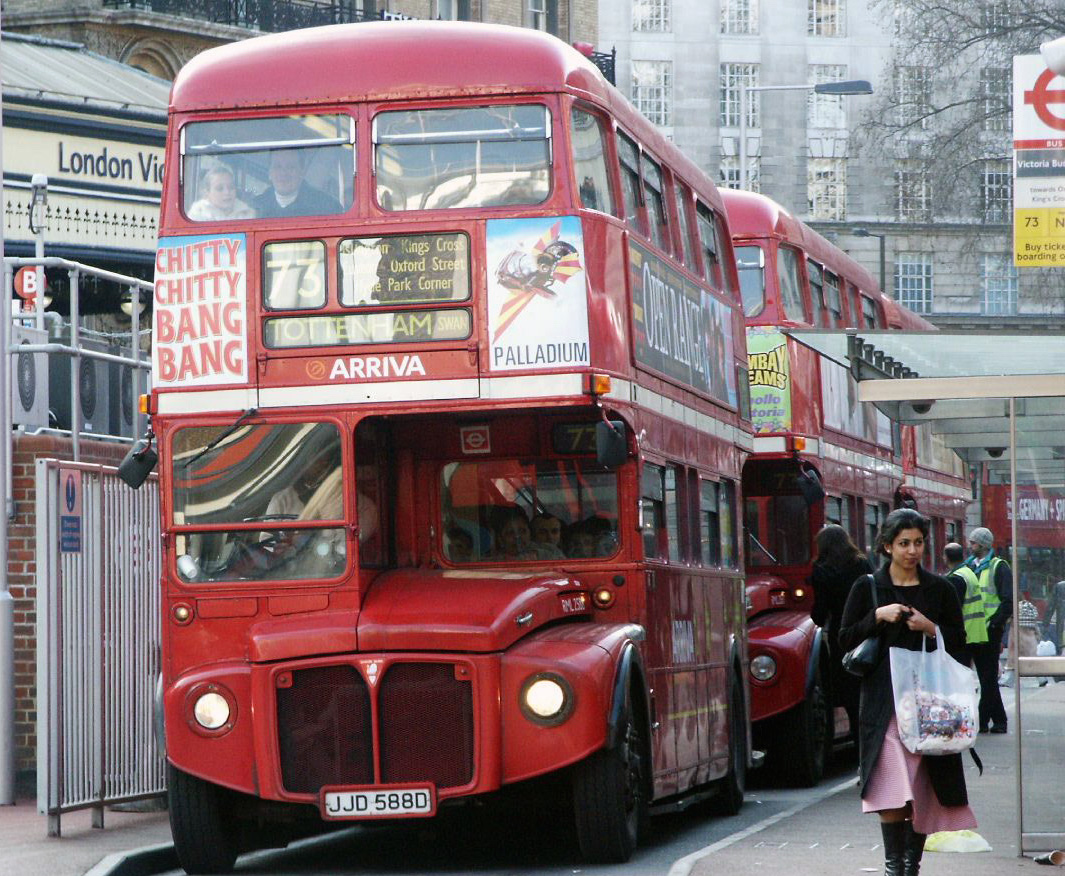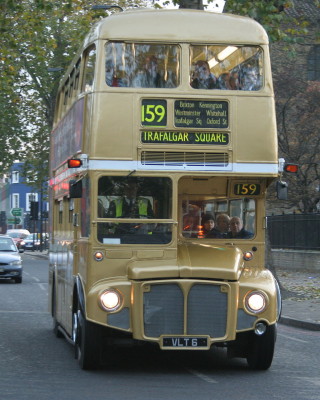The Routemaster bus is one of the most iconic parts of London that isn’t fixed to the ground. Like the black cab, it’s immediately identifiable with the city and even today influences the look of new buses that move through London’s streets. Premiering in 1954 and in production until 1968, these incredibly sturdy vehicles outlasted many of their successors and (with some upgrades) are still running today for tours and other organisations. While the New Routemaster has taken on its predecessor’s responsibilities, there’s still plenty of love for the old girl and many interesting facts about this transportation icon.
Long-Lasting
Over a fourteen year period, Associated Equipment Company built 2,876 Routemaster buses. As stated above, they proved to be incredibly resilient and long-lived, and today there are 1,280 still in existence (though some survive more as museum pieces).
Replacement
The Routemaster was designed to replace the old trolley buses, which had served London for over 30 years along 68 routes that were powered by overhead electrical wires. The original diesel buses were ordered in 1935, but with the onset of the war, production did not pick up again until 1947. The first prototype came out in 1954 and the first Routemaster saw service in 1956. The Routemaster itself was not replaced until the New Routemaster in 2012.
Wrong Colour?
If you see a Green Routemaster, your eyes aren’t deceiving you. It’s still owned by London Transport and serves their country division.
Seeing Red
Prior to 1907, the colour of a bus actually determined which route it followed. London General Omnibus Company wanted to make their buses stand out against the fierce competition for service, so they painted their entire fleet red. Some predictable confusion led the Metropolitan Police to suggest that LGOC add numbers to its buses to identify their routes. The Underground Group purchased LGOC in 1912, which later became part of the London Passenger Transport Board in 1933, shortened later to “London Transport”.
Silver and Gold
In keeping with Her Majesty Queen Elizabeth II’s silver and golden jubilees, some Routemasters were repainted in those colours in 1977 and 2002, respectively.
Phantom Bus
Allegedly, a ghostly Routemaster Number 7 drives up the middle of the street in Cambridge Gardens with no lights, no passengers, and no driver! It was last spotted in 1990.
All Aboard!
One of the most popular features of the original Routemaster was its rear platform that made it easy to board and alight the bus, even while it was moving. A rear conductor would stand on the platform to help people on board and take their tickets or fees, but eventually the job was phased out. However, the convenience of the rear platform wasn’t without some danger, and in 2013, former Mayor of London Ken Livingstone revealed to ITV that approximately twelve people per year died from falling off the platform during his time in office.
Not a Routemaster
The famous Night Bus from Harry Potter, which was first seen on film in the adaptation of Harry Potter and the Prisoner of Azkaban, was not actually made from a Routemaster. Instead, it was constructed out of three Regent III RT buses. The Regent III was the immediate predecessor to the Routemaster and ran from 1939 to 1979.
Ride an Original
While many of the original Routemasters have been taken out of service, there are still a couple operating on heritage routes that are still available to passengers. Route 9 travels from Kensington High Street to Aldwych while Route 15 travels from Trafalgar Square to Tower Hill.
Ladies Who Bus
In 2009, three ladies named Linda, Mary, and Jo opted to use their Freedom Pass (available to people over 60 years old) to ride every route in numerical order. They completed their task nearly five years later and since March, 2014, have set their attention to visiting every single museum in London.
A Little Bit of London In Your Inbox Weekly. Sign-up for our free weekly London newsletter. Sent every Friday with the latest news from London!






Like the new replacement “Routemaster” but the original remains the best. Miss them!
Wish we had like them here in NY.
I do love those Routemasters. London black cabs, tube trains, and buses are inseparable from thought of THE GREAT CITY!
Routemasters no longer operate on the historic route 9H as this service has been withdrawn in July 2014, owing to costs of operating the service, TfL has claimed. Historic route 15H continues to operate.
My Dad worked for London Transport out of the Sidcup Garage before it closed, then on to Plumsted until he retired, never a driver , cleaned shunted them around the garage never wanted the responsibility of passengers .
Whatever happened to Sidcup Garage. Lastbtime I was in Foots Cray it had been demolished. Wasnt it a listed building
I rode the No 9 in February 2014 all the way from start to finish, mainly because it was pouring rain and it seemed a good way to relax and stay dry for a bit. I then rode it back again and finally got off. It allowed me to really look at everything along the way, shops, people, interesting small sights. I love London!
I was a Conductor on the No 24 Hampstead to Pimlico. No expensive finishing school needed. I could write a book on some of the joys of being a London Clippie
Sad day when the Routemaster was retired
The Routmaster bus (RM#) was replaced by the (RML#) buses which a little longer, and carried more passengers. I used to work on both the RMs and the RMLs out of Stockwell Garage (nr. Brixton) about 50 years ago when when they introduced the ticket printing machine that clippies used to carry on their lower chest. they would dial in the stage number and amount, then hand crank a printed ticket out. The “conductors” were nicknamed “clippies” from its forerunner ticket machine that used different value & coloured tickets that had to be “clipped” to show at what stage (location) you got on the bus so that the “inspector” could check that you were not “over riding” when they did random checks.
If your totals did not balance when the conductor’ went to cash out at the end of the day, The conductor had to make up the difference.
These used to go pass our house all the time. I also used to get them to school during the 80’s. We used to run up the stairs, sit down and look out of the window as if we had been on the bus for ages. The idea was to try and fool the conductor so we could keep our bus money for lunch. I’m sure they knew but used to let us ride for free every now and again!